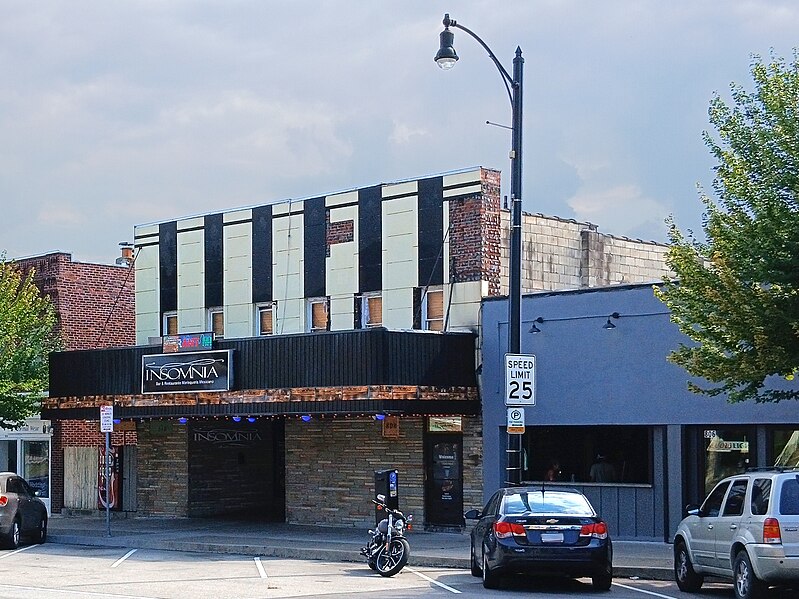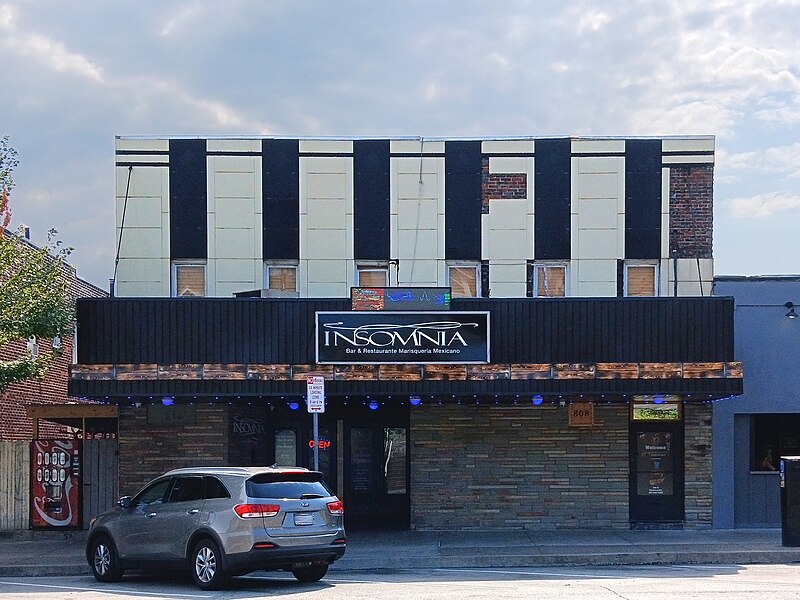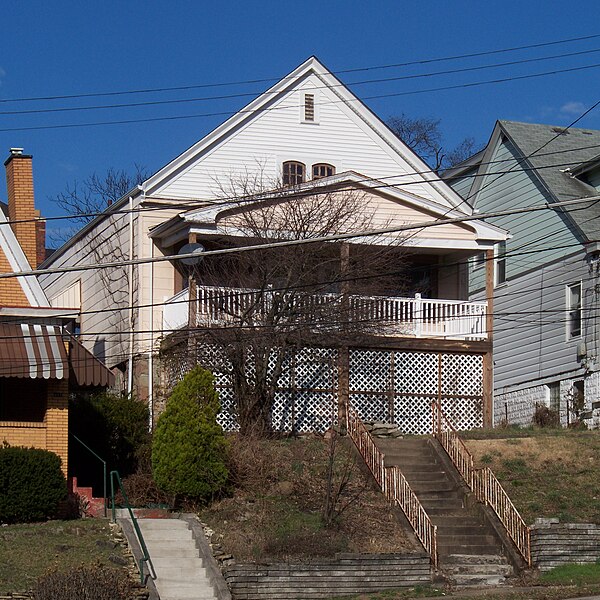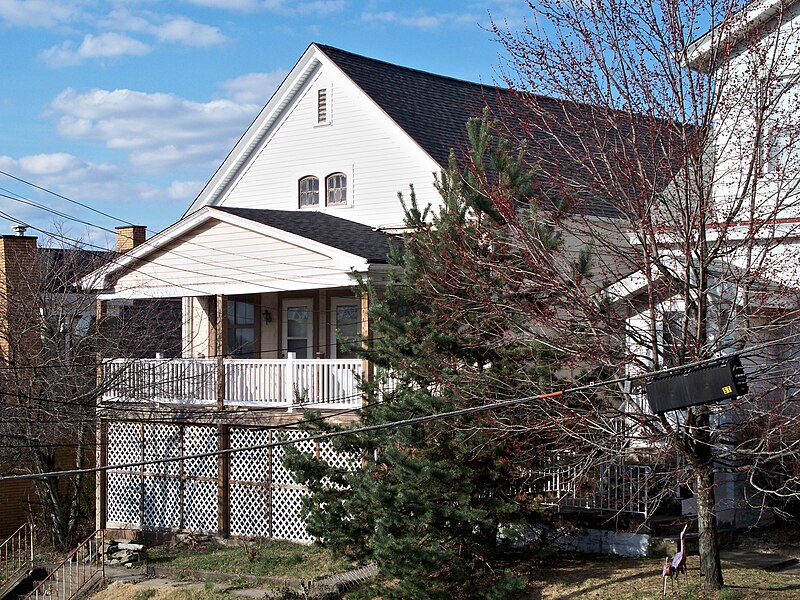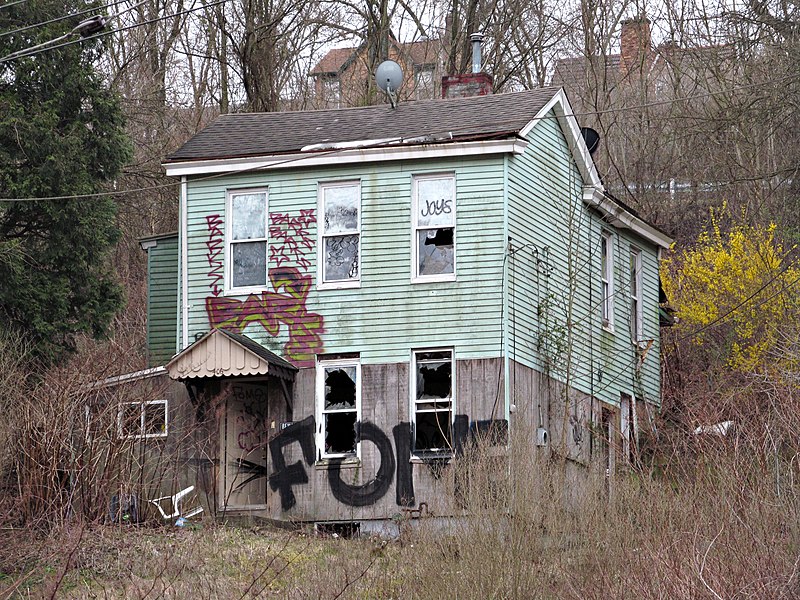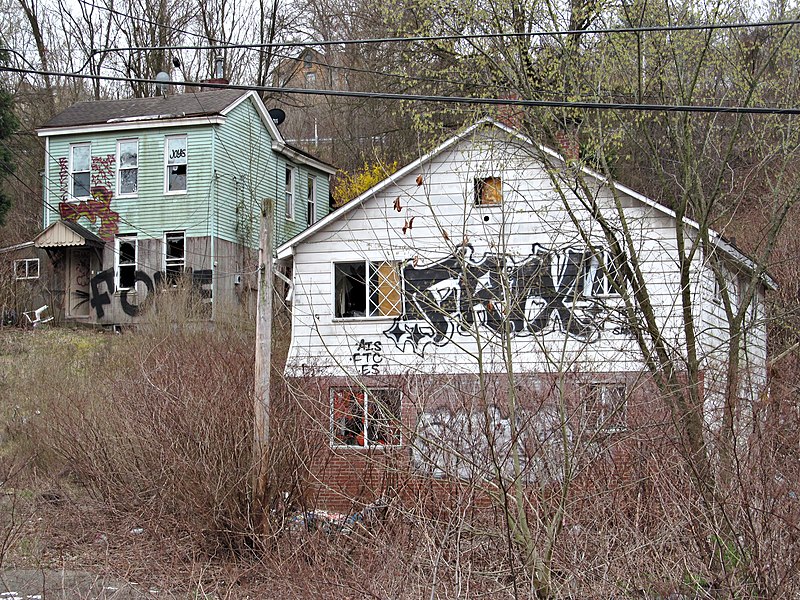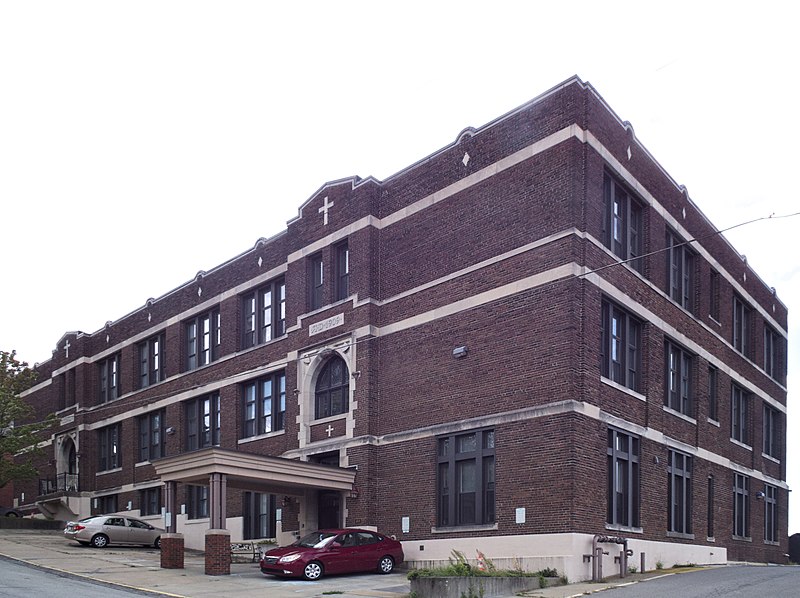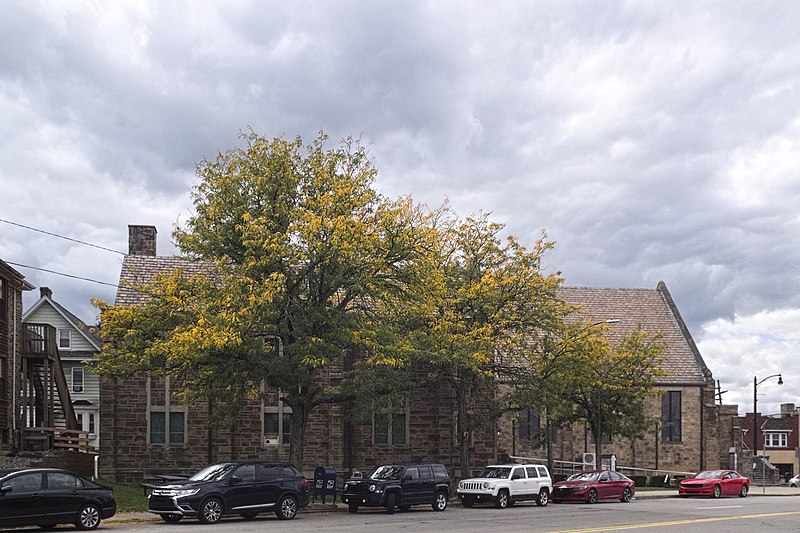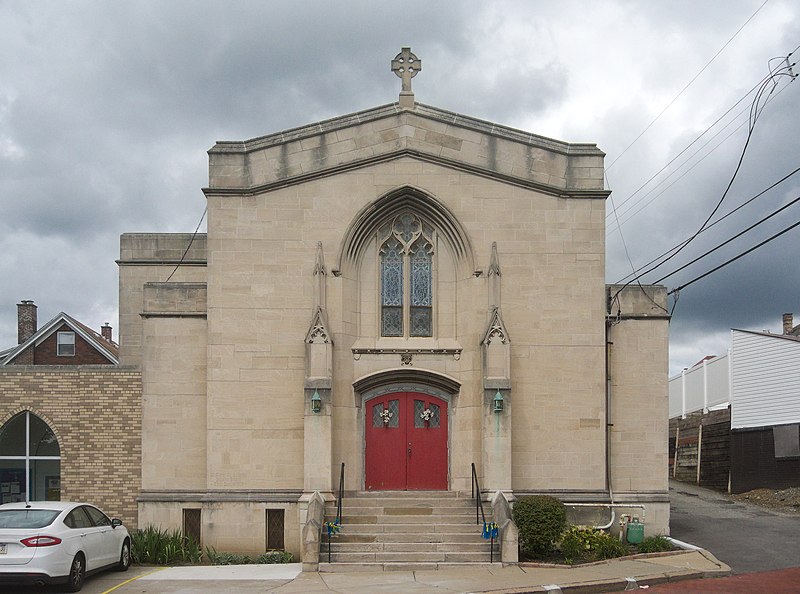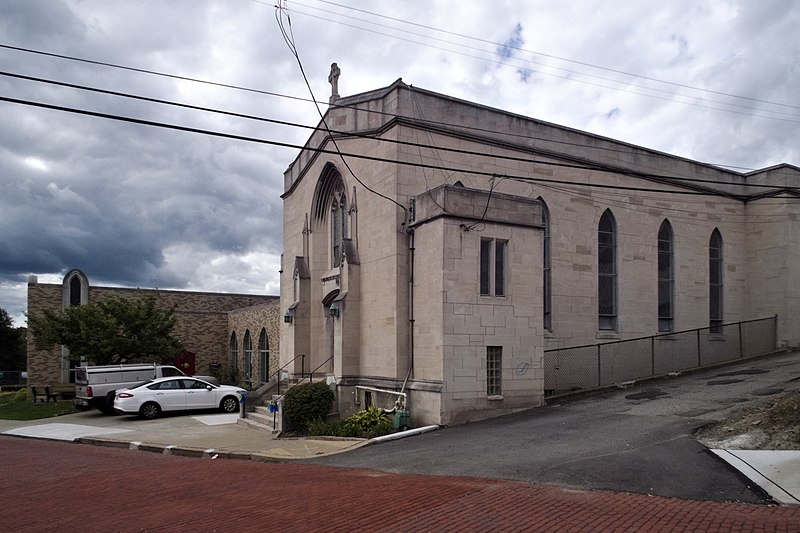
The borough of West Liberty included more than half of what is now Beechview and all of Brookline. West Liberty Avenue, as you might guess from its name, ran right down the middle of it. Today city planning maps make West Liberty Avenue the border between Beechview and Brookline, but it forms a distinct business corridor of its own.
The five-way intersection of West Liberty Avenue with Capital Avenue, Haddon Way, and Curranhill Avenue looked for a while as though it might become the core of a substantial neighborhood business district. Instead, West Liberty Avenue was taken over by the automobile business, becoming the second great automobile row in Pittsburgh (after Baum Boulevard). But these buildings remain as a little clot of neighborhood businesses among the car dealers.

In the picture above, the building at left with Slick’s Bar in it, which dates from about 1916, was designed by Charles Geisler, who at the time lived only a block up the hill from the construction site.1 The red bricks at the top (with an initial E bolted into them) probably indicate where there was once a green-tiled overhang, one of Geisler’s favorite ornaments.

A little farther up Capital Avenue we find this building, now home to a cupcake shop. The simple ornament picked out in blond brick is typical of the era around and after the First World War.



On the other side of West Liberty Avenue, this building from about 1928 was designed by the architects Smart & Scheuneman.2 For many years it has been home to a sewing-machine shop of the sort where they will not bat an eye if you bring them a hundred-year-old machine to work on.


This frame building, probably dating to the early 1900s, has been neglected for a long time—long enough that it still has its wood siding and trim.
- Source: Construction Record, February 26, 1916, p. 4. “Architect Charles R. Geisler, 1933 Warnock street, awarded to Harry Bupp, 1093 Wingate avenue, the contract for erecting a two-story brick veneered hollow tile store and apartment building on Capital avenue for Henry Anmann, 103 Capital Avenue. Cost $6,500.” As built, No. 101 has three floors instead of two. On the “1923” layer at Pittsburgh Historic Maps. “E. Amman” [sic] appears as owner of no. 101. Warnock Street, where Mr. Geisler lived, is now Woodward. ↩︎
- Source: “Bids Taken for New 19th Ward Building,” Pittsburgh Sun-Telegraph, October 9, 1927. “Bids have been taken for a store and apartment building at West Liberty avenue and Currant [sic] street, Nineteenth Ward, for Mrs. R. M. Ousler. Smart & Scheuneman are the architects.” “R. M. Oursler” is shown as owner of this and the older building next door on a plat map. ↩︎

